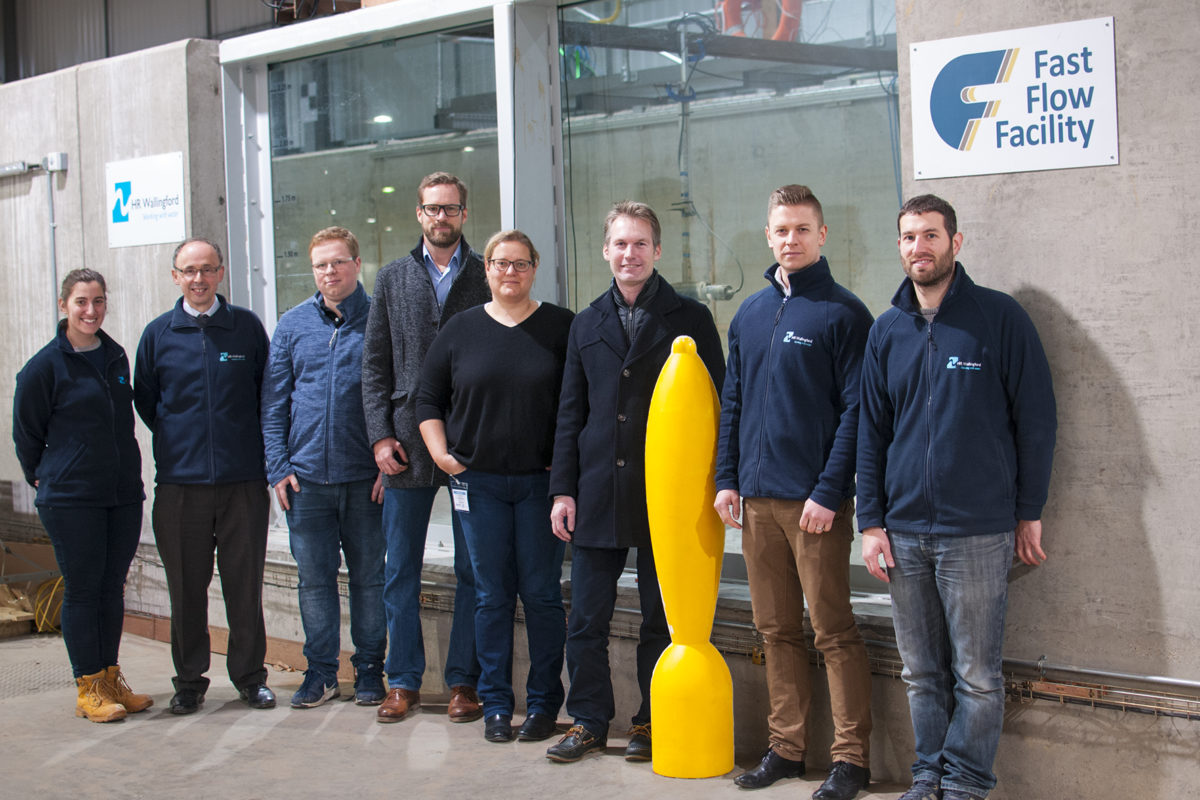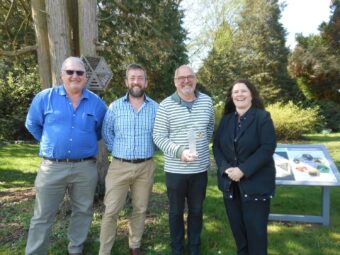
Oxfordshire lab investigates the movement of unexploded wartime ordnance in the North Sea
If their locations are not precisely known, unexploded wartime ordnance in the sea can present an obvious hazard to renewable energy projects, such as during the laying of cables to bring offshore wind energy to shore.
Engineering and environmental hydraulics specialists, HR Wallingford, have been using their Fast Flow Facility to obtain data that will help to predict the movement of unexploded ordnance in the North Sea.
At 75 m long, the Fast Flow Facility in HR Wallingford’s physical modelling laboratories at Howbery Business Park, is one of the world’s largest marine test facilities, holding a million litres of water, and able to generate waves up to 1 m high and flows of over 2 metres per second.
Potential sites for offshore cable routes and platform locations undergo unexploded ordnance (UXO) surveys which allow UXO locations to be pinpointed on a particular date, but the action of currents and waves may mean that UXO move over time, making it necessary to repeat these measures, for example in the case of a cable repair.
The University of Rostock in Germany has developed a model of unexploded ordnance movement for which it has already conducted small-scale modelling at the University. Now, with co-funding from TenneT, a leading European electricity operator who supply electricity to 41 million end-users in the Netherlands and Germany, this new project is seeking to generate large-scale data to better inform and validate this model.
Dr Peter Menzel, from the Sediment Transport Research Group at the University of Rostock, said: “We have provided a model of a 1:1 scale 250 lb World War II bomb and other typical unexploded ordnance at 1:2 scale. We are investigating how deeply the ordnance bury themselves over time, how current speed affects their movement, as well as how rates of flow affect scour around them.”
Prof. Richard Whitehouse, Chief Technical Director, Sediment Dynamics at HR Wallingford, said: “Our Fast Flow Facility provides a controlled environment in which to evaluate the effects of currents on full-sized UXO, and so provide the University of Rostock with validated data across a range of flow conditions, burial depths and mobilisation speeds.
Dr Anja Drews, TenneT, said: “By funding this research, we are helping to ensure that knowledge in the industry about UXO movement is as accurate as possible, improving safety by quantifying, and thereby minimising, the risk to people and equipment.”
More in Business Parks

HR consultant moves office from garden studio to Howbery Park’s Manor...
Jane Fryatt, who set up her own HR consultancy in 2018 in her garden studio, has moved to offices in the Manor House at Howbery Business Park. Jane has been coming to Howbery Park since 2012 as all of her children have been to Puddleduck Nursery. After setting up her own business at home six […]

Howbery Business Park hosts forest school activities in enchanting woodland clearing
A woodland clearing in the beautiful grounds of Howbery Business Park near Wallingford has been transformed into an enchanting space for children to play and learn in the great outdoors. Wild Wood Warriors Forest School, Puddleduck Nursery and Howbery’s grounds team have worked together to create an area where young minds can appreciate the wonders […]

Howbery Park helps hedgehogs
Howbery Business Park has been focusing on improving support for hedgehogs in its grounds for a year, as part of a six-year biodiversity programme. The team has added hedgehog houses, worked on improving food supplies and checked there are corridors through the park for the prickly creatures to move. In recognition of meeting criteria set […]
From this author

HR consultant moves office from garden studio to Howbery Park’s Manor...
Jane Fryatt, who set up her own HR consultancy in 2018 in her garden studio, has moved to offices in the Manor House at Howbery Business Park. Jane has been coming to Howbery Park since 2012 as all of her children have been to Puddleduck Nursery. After setting up her own business at home six […]

Howbery Business Park hosts forest school activities in enchanting woodland clearing
A woodland clearing in the beautiful grounds of Howbery Business Park near Wallingford has been transformed into an enchanting space for children to play and learn in the great outdoors. Wild Wood Warriors Forest School, Puddleduck Nursery and Howbery’s grounds team have worked together to create an area where young minds can appreciate the wonders […]

Howbery Park helps hedgehogs
Howbery Business Park has been focusing on improving support for hedgehogs in its grounds for a year, as part of a six-year biodiversity programme. The team has added hedgehog houses, worked on improving food supplies and checked there are corridors through the park for the prickly creatures to move. In recognition of meeting criteria set […]

